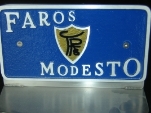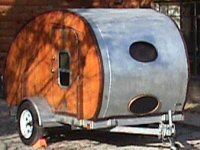Hi all,
Been lurking for quite a while and am just beginning my serious foray into building my own teardrop. I have welding skills and am a licensed aircraft mechanic so building is preferable over buying for me. I've been debating on the pros and cons of an aluminum trailer over a steel trailer and wanted to get the input from people here who may have experience.
The obvious pros are weight savings, easy to tool, and corrosion resistance. The cons are the equipment and technique needed to weld aluminum, the cost is higher, and durability could be lower if not built correctly.
Was wondering if cost was not an issue for you and you had the skills and equipment to construct an Aluminumk trailer, would you go that route and why or would you choose steel and why?
Thanks!
Build Steel or Aluminum Trailer?
9 posts
• Page 1 of 1
Re: Build Steel or Aluminum Trailer?
p40whk wrote:Hi all,
Been lurking for quite a while and am just beginning my serious foray into building my own teardrop. I have welding skills and am a licensed aircraft mechanic so building is preferable over buying for me. I've been debating on the pros and cons of an aluminum trailer over a steel trailer and wanted to get the input from people here who may have experience.
The obvious pros are weight savings, easy to tool, and corrosion resistance. The cons are the equipment and technique needed to weld aluminum, the cost is higher, and durability could be lower if not built correctly.
Was wondering if cost was not an issue for you and you had the skills and equipment to construct an Aluminumk trailer, would you go that route and why or would you choose steel and why?
Thanks!
Welcome to the site P40. You have got it figured correctly about needing special equipment/skills, not to mention expensive for constructing an aluminum trailer.
A properly engineered steel frame trailer can be built very strong and light with minimal materials with various wall thicknesses used in the appropriate places.
If you look at the old Kenskill and or Kit frames, they were very basic bare bones frames and are still being drug down the road today with no issues 70 years later.
My theory in life now that I am in my senior years is that it only has to outlast me

I fear the day that technology will surpass our human interaction, the world will have a generation of idiot's.
-

Redneck Teepee - Silver Donating Member
- Posts: 853
- Images: 21
- Joined: Fri Dec 27, 2013 5:00 pm
- Location: Central Ca.



